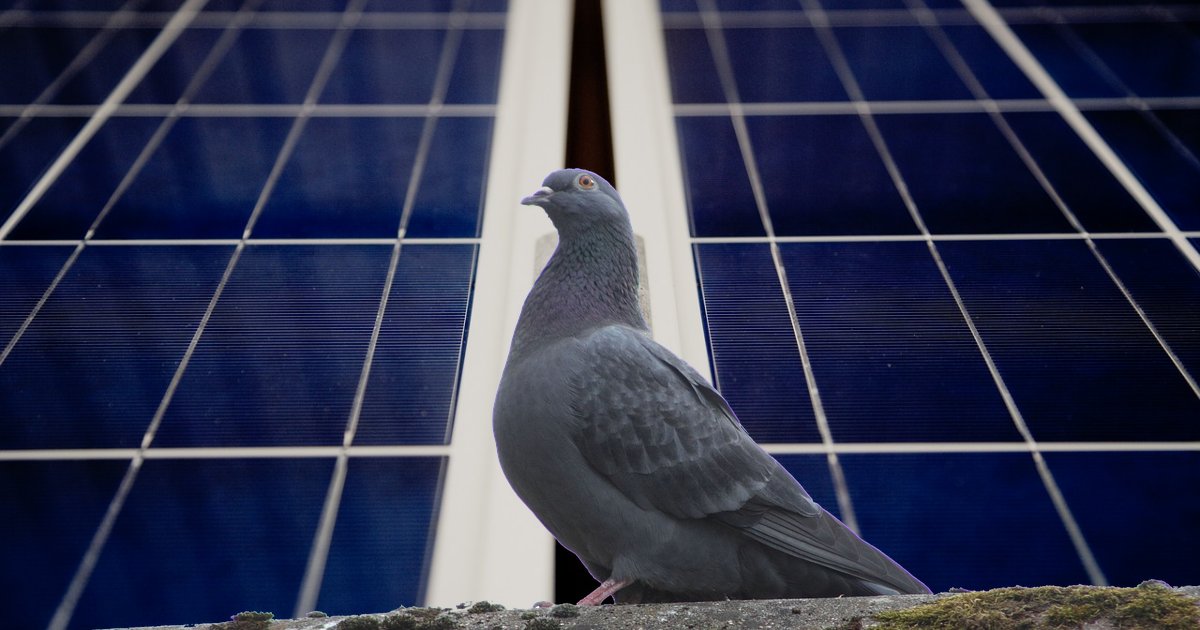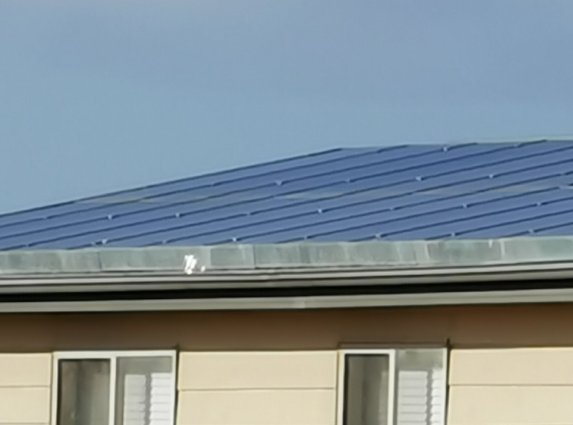
Pigeons are a pesky creature when it comes to solar panels, not just because of their pooping on top, but what can go on underneath.
It would be incredibly frustrating for system owners to see their solar panels covered in pigeon poop – and even more so when these feathered rats seem to totally ignore the next-door neighbour’s system.
The issue goes beyond aesthetics – PV systems with soiled solar panels produce less electricity and it doesn’t take much poop to have an impact1.
But sometimes it’s what you can’t see that can potentially be even worse.
Pigeons can have a habit of nesting under panels as well. So in addition to the poop, dry combustible material can build up underneath posing an electrical safety hazard. This nesting material can also trap heat, impacting on the efficiency of the system and service life of the panels.
The presence of large amounts of poop underneath can attract other pests such as mice, foul water supplies, wind up blocking gutters, and accelerate corrosion of metal roofs.
I’ve seen panels pulled off some roofs where the amount of pigeon-related debris underneath was astonishing. Where pigeons are nesting, they’ll of course be pooping a lot more on top of the panels too.
“Solar Skirt” Solutions
The solution is a barrier – but some thought needs to be given as to what sort of barrier will be used.
I spotted this one that appears to consist of solid metal strips.
While this may be successful in keeping pigeons out, it could also keep heat and some moisture in.
A mesh of sorts is probably more appropriate. The following are a couple of interesting products, but note these aren’t recommendations – they are just to provide an idea of potential solutions that are available.
This “solar skirt” product comes in a 30 metre roll and includes fittings for a couple of hundred bucks. Given a panel is around 1 metre wide and 1.8 metres long, this would be enough to create a barrier for an array of 12 panels, or in the case of two arrays, around 10 panels (5 + 5). In the following product, the mesh is galvanised and coated in UV-resistant PVC.
Here’s another that uses a plastic mesh and comes in 1 metre lengths – Clenergy’s PV-ezRack DFendr.
The material is polyamide (nylon), which has very good UV resistance. The skirt is affixed using the supplied 65Mn spring steel clips. This makes me wonder about the potential for galvanic corrosion, but the clips appear to be coated. I wasn’t able to find pricing, but a bit more information on the PV-ezRack DFendr can be found here.
Whatever solution you choose, it’s probably wise to check with your installer to ensure what you have selected won’t impact on the warranty of your solar panels – and get it in writing. A note to the panel manufacturer may also be a good idea.
Safety First On Rooftops
Roofs aren’t the safest of places at the best of times, and when doing something particularly fiddly the potential for a nasty accident increases. Installing a pest barrier is an exercise best left to a professional with relevant experience and safety gear.
With millions of solar panel systems installed across Australia now, I imagine a number of businesses in high population areas could be sustained installing pigeon barriers – so there should be someone locally able to do the job if you live in one of the capital cities. If you’re going to use a general pest control service, ensure they’ve had some experience working around solar panels.
Installing Solar Panels Soon?
If pigeons are a prevalent pest in your area, protection may be something to discuss with your installer prior to the installation, rather than potentially face a greater cost of having to call someone back to do the work down the track.
We’d be interested to hear from solar owners about what products and approaches work well and what don’t – feel free to leave a comment below on your experiences with pigeon-proofing solar panels.
Footnotes
- Panel soiling is where having microinverters can be handy ↩


 RSS - Posts
RSS - Posts



Not ‘EZ’ on a tiled roof, note they only show corru roof in the demo.